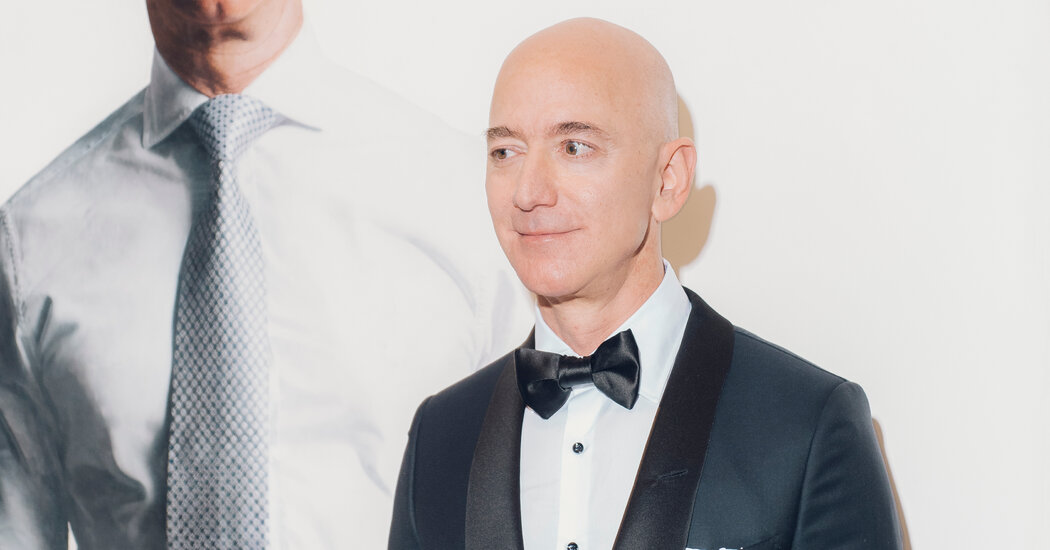
In order to “imagine a new art, one must break the ancient art,” the French author Marcel Schwob wrote more than 100 years ago. Today, that call to action has been boldly made in the form of a Change.org petition demanding that Jeff Bezos buy and eat the Mona Lisa.
The petition, which at press time had over 9,200 signatures, was started by Kane Powell, a resident of Stevensville, Md. “Nobody has eaten the mona lisa and we feel jeff bezos needs to take a stand and make this happen,” his petition reads.
Mr. Powell isn’t wrong, in a matter of fact: Since it was painted by Leonardo da Vinci in the early 1500s, people have stolen the Mona Lisa, copied the Mona Lisa and thrown a teacup at the Mona Lisa — but no one has ever eaten it.
Mr. Powell came up with the idea for the petition — which, to be clear, is a joke — while at an Applebee’s with his fiancée and two friends before the pandemic. The group of four had dinner and started ordering from the $1 drink menu, and that’s when the ingenuity started to flow. “Jeff Bezos was in the news at the time,” Mr. Powell said. “We were like, ‘what if he bought it and ate it?’ It would be stupid and outlandish.”
Only in the past week or so has the petition gained any sort of traction. Mr. Powell said that he’d long forgotten that he had even made it.
Sophie Grange, the deputy director of communication at the Louvre, where the Mona Lisa is on permanent display, said in an email: “We have seen the petition but the Musée du Louvre will not comment.”
In his call to action, Mr. Powell is making a statement about the absurdity of massive amounts of accumulated wealth, as well as the bizarreness of the current internet era. “We all know that Bezos has more money than needed,” Mr. Powell said. “It’d just be amusing to have a person of that kind of power be funny with their money because, let’s be honest, they don’t need it, and I think it would just be entertainment.”
It’s an interesting thought experiment.
Mr. Bezos, the Amazon founder, has a net worth upward of $200 billion. In 1962, according to Guinness World Records, the Mona Lisa was assessed at $100 million, then “the highest known insurance valuation for a painting.” In today’s dollars, that would roughly translate to over $850 million. Though Mr. Bezos could theoretically afford it, the Mona Lisa isn’t for sale, and France likely wouldn’t be willing to give it up.
“As a general rule, the French Heritage Code states that works in French national collections (e.g., the Louvre) are deemed to be French national treasures. Other provisions of French law provide that national treasures are inalienable,” Stephen Urice, the director of the arts law track at the University of Miami School of Law, wrote in an email.
Even if the Mona Lisa were sold for $60 billion (as the French tech executive Stephane Distinguin has advocated), Mr. Bezos could still theoretically afford it. Eating it might prove more difficult but it would really depend on Mr. Bezos’ stomach.
“You might get indigestion, but there is nothing stopping you under U.S. law from eating the Mona Lisa if you own it,” said Amy Adler, an art law expert and professor at the New York University School of Law. “We only protect works for the life of the artist, with a few minor exceptions, but that’s basically the rule under the Visual Artists Rights Act.”
In France, droits moraux, or “moral rights,” would typically protect an artwork from such an act. “Moral rights protect artists from the alteration, mutilation, or harm to their works that would be damaging to their reputation,” said Mr. Urice.
But Leonardo da Vinci’s works aren’t covered by them, Mr. Urice added. “The statute wasn’t enacted until the 19th century, and certain aspects of moral rights in France descend to heirs who can enforce them, but the statute would not be retroacted to the 16th century.”
Still, the hypothetical scenario of Mr. Bezos buying and consuming the Mona Lisa would fit “within the tradition of destruction of art as a way of creating art,” Ms. Adler said.
For example, to create his 1953 work “Erased de Kooning Drawing,” Robert Rauschenberg spent a month erasing a Willem de Kooning drawing. “Here is an example of how art can emerge from the near destruction of a previous piece. The Rauschenberg work depends on the fact that he violated not a reproduction of a work but an original, and not just any original, but an original by Willem de Kooning,” Ms. Adler wrote in a paper titled “Against Moral Rights.”
Marcel Duchamp had his own version of satirizing the Mona Lisa. In 1919, fed up with the blind reverence to da Vinci’s most famous work, Duchamp purchased a print of the Mona Lisa and penciled on a mustache and goatee. He gave it the title “L.H.O.O.Q.” — which, when said aloud in French, essentially means “she has an attractive rear end.”
More recently, in 2019 at Art Basel Miami Beach, the New York artist David Datuna ate the banana in Maurizio Cattelan’s buzzy and high-priced “Comedian.” (He said that “it tasted like $120,000.”) Mr. Datuna also claimed that it wasn’t an act of vandalism, but a performance. “This is the first time where an artist eats the concept of another artist,” he said.
Whatever its artistic merit, the petition, Ms. Adler said, “captures the sentiment that Jeff Bezos can buy anything and make it his own” — including “the ultimate symbol of our shared public interest in art.” (Up next: the NFT version?)
Indeed Duchamp, who loved humor, might have signed the petition if he were alive today. After all, he once said: “Use a Rembrandt as an ironing board.”






